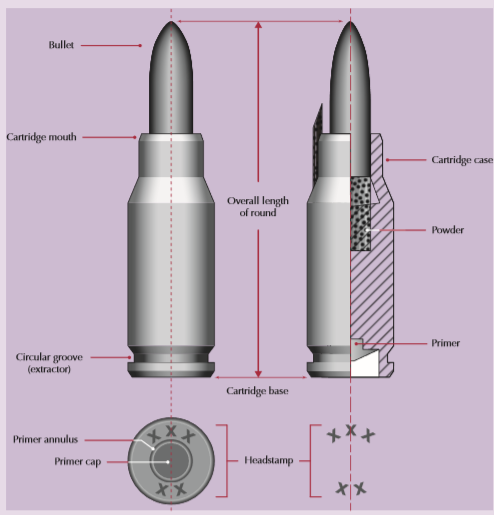7 Simple Techniques For Ammunition Pro Llc
Table of ContentsThe Single Strategy To Use For Ammunition Pro LlcSome Of Ammunition Pro LlcSome Known Incorrect Statements About Ammunition Pro Llc Ammunition Pro Llc for Dummies4 Simple Techniques For Ammunition Pro Llc
The fundamental components of ammo are the same for rifle, handgun, and shotgun ammunition. Today we're looking at the what the basic parts of ammo are and just how they function together to fire a round.The bullet is seated in the open end of the situation. When you fire a bullet out of a semi-auto gun, the gun's extractor lifts the instance from the firing chamber and it flies out of the gun.
A weapon's firing pin strikes a cartridge's guide. The guide is located in the rim of the instance of a rimfire cartridge.
Get This Report about Ammunition Pro Llc
Both common types of primers in centerfire cartridges are Berdan and Fighter guides. Gunpowder alongside the instance that usually includes it. Powder, likewise understood as propellant or gunpowder, is a fast-burning chemical mixture. The guide surge ignites it. It is generally a blend of saltpeter, charcoal, and sulfur.

We call the projectiles for shotshells, which we discharge via shotguns, slugs and shot. A slug is one strong item, generally constructed out of lead. Shot is a group of pellets constructed out of lead, steel, bismuth, or tungsten alloy. Shot pellets can can be found in various dimensions and amounts. Since you have a basic understanding of the basic components of ammunition, you can really feel a little bit more confident in just how your weapon and ammo function!.
Little Known Facts About Ammunition Pro Llc.
Keep up with Special Deals, Advancement Notice of Sales, and Shop Occasions
Fun fact: Grains are used to explain the mass of a bullet since right back in the early days of weapons, it was a dispenser's unit of dimension, and a common denominator was needed to determine just how much lead to make use of to make cast lead bullets (Firearm Ammunition). 'Grains' as a device of step for weight goes all the way back to ancient times, and represents the weight of a grain of wheat

(https://www.instructables.com/member/ammunitiondde/?cb=1744382502855)For reference, the weight of a paper clip has to do with 16 gr. So, we know that grains are an action of mass, and more = heavier, and heavy is good, right? Yes, hefty is great, however mass of the projectile isn't the only point you need to think about when selecting a round for your weapon.
Some Known Questions About Ammunition Pro Llc.
This spin is produced by grooves reduced or inculcated the inside of the barrel, which are described as 'rifling'. Enjoyable fact, this is the beginning of the term "Rifle" ex. A rifled musket vs. smoothbore firearm. The effect this spin carries projectiles is a maintaining one the bullet rotating keeps the nose pointed straight, in the exact same method that a perfectly spiraled football toss is mosting likely to be far more secure and exact in flight than an awful duck, end over end toss.
Just how does this relate to grain weight? Picture you're on one of those play ground carousels, the ones with bars you hold on to while it rotates.
Or in the instance of the circus adventure, you begin to feel much heavier. The more mass you have (weight), the much more you will certainly feel this effect. The same effect takes place with bullets. The heavier the projectile, the more result a quicker spin will certainly carry it. This is why you tend to see slower spin rates for much heavier, slower projectiles, and faster twist prices for lighter, higher rate projectiles.
All About Ammunition Pro Llc
There's one more aspect that we have to think about when choosing a grain weight for our ammunition. As hinted at above, bullet speed, or the rate of the projectile, is a major variable when establishing the most effective grain weight projectile to use. Rate is impacted by a couple of major variables, including the type and amount of propellant (gunpowder), barrel size, and bullet weight.

One of the most usual grain weight rounds for 9x19mm cartridges are 115gr and 124gr. These are commonly lead core, fully jacketed (FMJ) rounds. Both of these grain weight cartridges will certainly carry out well in factory 9mm pistols, to typical gun ranges (approximately 50 yards). 115 grain rounds are one of the most typical (and for that reason least pricey).